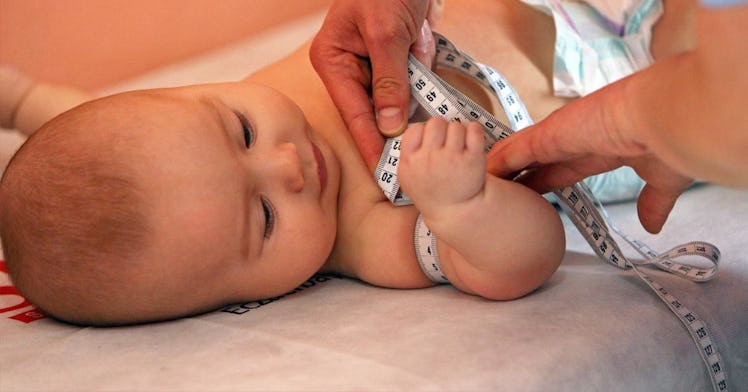How To Read And Understand A Baby Growth Chart
Are they making the grade?

As a new dad, the ideas of “normalcy” for your kid will be a constant obsession. And that will just as true for your fourth kid as it is for your first kid. (But, that fifth one? They might be a little weird.)
Like any good obsession, the quest for normal will be maddening. And nowhere is that more apparent than when you’re trying to decipher a baby growth chart. That’s because the insane tangle of complicated lines that are meant to help you find “normal” are anything but … normal.
So how do you figure out where your kid is? Your doctor might be able to help, but you’re a man of action, not science! Here’s how to figure this crap out on your own, once and for all.
What Do Percentiles Mean?
The word “percentile” can bring back cold sweats related to your SAT days. And now that your kid is getting measured and weighed every 10 minutes, you’ll be hearing it a lot. But, as you learned from that essential SAT prep tool Schoolhouse Rock, “Knowledge is power!” Get ready to feel powerful!
Here’s a real, live growth chart (this one is from the CDC). You’ll notice 2 series of lines that resemble, maybe, the tail of a comet making a left hand turn. Or, if you’d rather, the flicking tail of Twilight Sparkle (whichever you prefer, brony). Both of these whooshing curves represent the average growth of a selection of “normal” children. The woosh above is length. The whoosh below is weight.
The lines represent those pesky percentiles. They simply mean this: If your child is falling within the 5th percentile for length, there would be 95 out of 100 kids who would be longer than yours and only 5 who would be less long. If you kid is in the 50th percentile for weight, then out of 100 kids there would be an equal number who weighed more and less than yours.
When They Don’t Mean “Normal”
But here’s the thing. It doesn’t matter what percentile line your child is actually on. The more important part is that, as they grow, the plotted data points from all those measurements parallel their associated percentile. That indicates that they are growing normally. So 5th? 95th? Who cares? As long as they stick with the curve of that line, or as close as they can with regular life factors, it’s all good.
When is it okay to actually get a bit concerned about the growth chart? If your kid’s growth curve passes up or down across more than 2 percentiles. That could be an indication of abnormal growth that could be possibly linked to problems getting to few or too many calories.
The takeaway? There’s a huge range of “normal” out there. And you’re going to love your kid whether they’re in that range or not. Don’t stress over the growth chart. After all, there are far better things to obsess over rather than your kids “normalcy” — not the least of which is your love for My Little Pony. (Don’t worry, your secret is safe.)
This article was originally published on